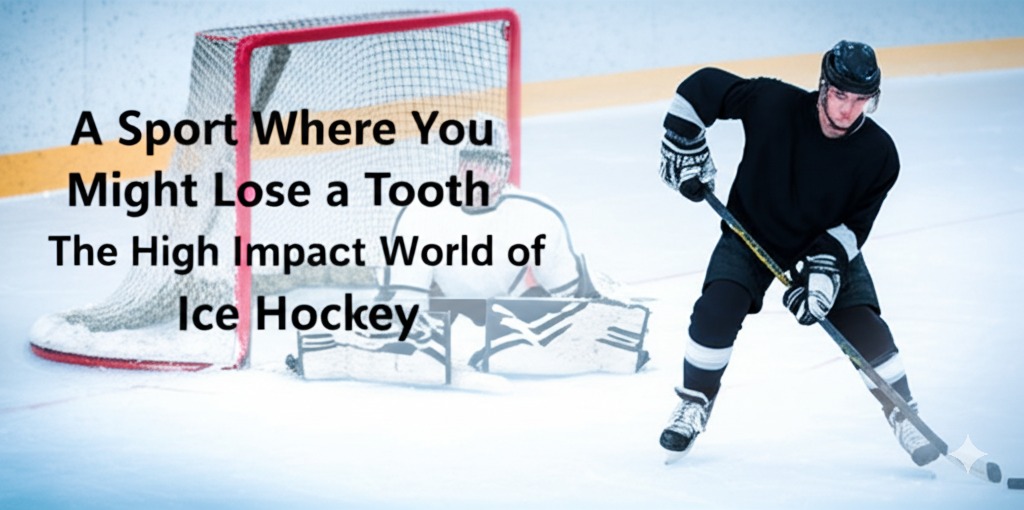Ever wondered which sport is most likely to leave you missing a tooth? If images of cracked helmets and bloody smiles come to mind, you’re probably thinking about ice hockey—and you’d be right. This intense, fast-paced sport is known not only for its thrilling gameplay but also for its high risk of dental injuries. In fact, hockey is one of the few sports where missing teeth are practically a badge of honor.
In this article, we’ll skate through everything you need to know about why ice hockey is a sport where you might lose a tooth, the risks involved, and how players (and parents!) can protect those pearly whites.
What Makes Ice Hockey So Dangerous?
High Speeds and Hard Hits
Ice hockey is a contact sport where players zip across the ice at speeds up to 30 miles per hour, often colliding with each other—or the boards—at full force.
- Body checks are a legal part of the game.
- Flying pucks can travel at over 100 mph.
- Sticks swing freely, often unintentionally clipping faces.
This combination of speed, physical contact, and hard surfaces makes dental injuries an all-too-common occurrence.
No Cage, No Problem?
While many leagues require full-face cages or visors, some professional players opt for minimal facial protection, increasing the risk of tooth loss, facial fractures, and cuts.
Common Dental Injuries in Ice Hockey
Dental trauma is so prevalent in ice hockey that it’s practically part of the sport’s culture. Here are the most frequent types of injuries:
1. Tooth Avulsion
This is the complete knockout of a tooth from the socket—usually due to a puck or elbow to the mouth.
2. Fractured Teeth
Cracks or breaks can occur from impact with sticks, pucks, or falls.
3. Tooth Intrusion
In severe impacts, a tooth may be pushed into the gum, causing intense pain and long-term dental issues.
4. Soft Tissue Injuries
Cuts to the lips, cheeks, or tongue often accompany dental trauma, especially when a player isn’t wearing a mouthguard.
Who’s Most at Risk?
While any player can suffer a dental injury, certain factors increase the risk:
- Position matters: Defensemen and enforcers take the most hits.
- Age counts: Youth players are vulnerable if they outgrow their mouthguards.
- Experience helps: Veterans tend to position themselves better to avoid injury.
Fun Fact: Wayne Gretzky, arguably the greatest hockey player ever, wore a mouthguard throughout his career—and kept all his teeth!
Mouthguards: The First Line of Defense
Wearing a mouthguard significantly reduces the risk of losing a tooth. Yet, not all mouthguards are created equal.
Types of Mouthguards:
- Boil-and-bite: Affordable but less protective.
- Stock mouthguards: Cheap but often uncomfortable and ill-fitting.
- Custom-fitted: Made by a dentist, offering the best protection and comfort.
Tip: Always choose a mouthguard that allows easy breathing and communication while fitting snugly over your teeth.
The Culture of “Missing Teeth” in Hockey
Believe it or not, losing a tooth in hockey has become something of a rite of passage.
- Players often joke about their “hockey smile.”
- Some even delay dental repairs until retirement.
- Fans see it as a symbol of toughness and commitment to the game.
While the image might be iconic, dental professionals and sports safety advocates are working hard to change the narrative and emphasize prevention.
Can You Still Play After Losing a Tooth?
Surprisingly, yes. Many players return to the ice almost immediately after a dental injury, especially if bleeding is under control.
However, a knocked-out tooth should be:
- Rinsed gently (not scrubbed).
- Placed in milk or saliva if it can’t be reinserted into the socket.
- Taken to a dentist within 30–60 minutes for the best chance of reimplantation.
Other Sports Where Teeth Are at Risk
While ice hockey tops the list, it’s not the only sport with dental danger:
- Boxing and MMA
- Lacrosse
- Football
- Skateboarding and BMX biking
Still, the unique combination of speed, contact, and frozen projectiles makes ice hockey particularly hazardous to your smile.
Final Thoughts: Play Hard, Protect Your Smile
Ice hockey is undeniably thrilling, but it comes with its fair share of risks—especially to your teeth. Whether you’re a player, coach, or parent, understanding those risks and taking proactive steps to protect your mouth is crucial.
Here’s how to stay safe:
- Always wear a custom-fitted mouthguard.
- Follow league safety guidelines.
- Encourage a culture of safety over bravado.
Don’t let a missing tooth sideline your love for the game. Stay protected, play smart, and keep smiling—on and off the ice.

Yara Bryant is a dedicated sports journalist with a knack for breaking down game strategies and delivering in-depth analysis. With a strong background in sports coverage, she specializes in football, basketball, and motorsports, bringing fans the latest news, insights, and predictions.


No responses yet